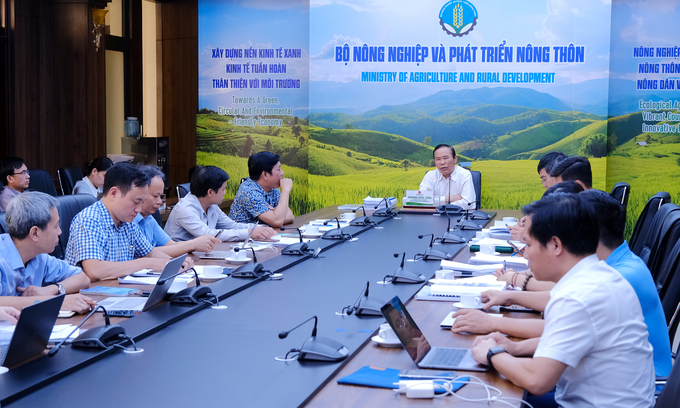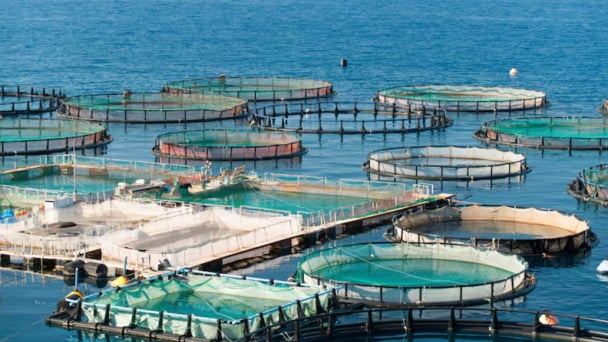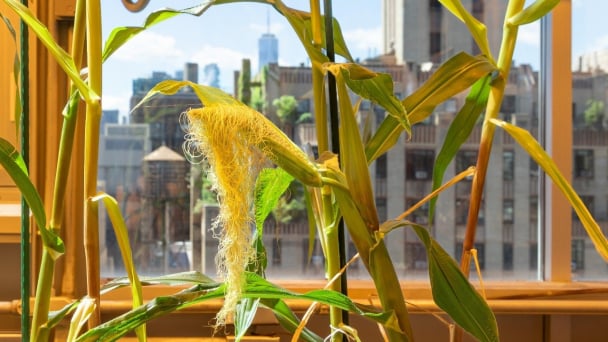June 6, 2025 | 02:05 GMT +7
June 6, 2025 | 02:05 GMT +7
Hotline: 0913.378.918
June 6, 2025 | 02:05 GMT +7
Hotline: 0913.378.918

Deputy Minister of Agriculture and Rural Development Phung Duc Tien in a working session with units on the planning to protect and exploit aquatic resources. Photo: Bao Thang.
The goal of the draft plan is to develop the exploitation of aquatic resources in a sustainable manner. Accordingly, the plan aims to reduce the number of fishing vessels to 83,600 units by 2030. Namely, the number of vessels ranging from 6 to 12 meters in length located in coastal areas will be reduced to 39,000 units, accounting for 46.6%; vessels ranging from 12 to 15 meters in length located in the highlands will be reduced to 17,060, accounting for 20.4%, and vessels over 15 meters in length located in the high seas will be reduced to 27,540, accounting for 33%; fishing vessels with a length of over 24 meters will be reduced to 2,994 units, accounting for 3.6%.
In the fishing industry, there are: 8,360 fishing trawlers, accounting for 10%; 5,112 seine net vessels, accounting for 6.1%; 33,697 gill net vessels, accounting for 40.3%; 13,377 angling vessels, accounting for 16%; 2,460 tuna fishing vessels, accounting for 2.9%; 2,480 netting vessels, accounting for 3.0%; 2,450 trapping vessels, accounting for 2.9%. The remaining fishing vessels are used in other occupations and logistics services.
According to the national roadmap to reduce the number of fishing vessels, localities in the country will reduce at least 12% of the total number of fishing vessels compared to 2020 until 2030, in order to ensure effective and sustainable fishing development.
Regarding the structure of fishing industry, the number of gill net vessels in the coastal area account for 57.0%; angling vessels account for 16.2%%; trapping vessels account for 2.2%; Vessels used in other occupations account for 24.6%. In tidal areas, fishing trawlers account for 15.6%; gill net vessels account for 29.0%; seine net vessels account for 7.3%; angling vessels account for 27.9%; tuna fishing vessels account for 0.4%; netting vessels account for 3.1%; trapping vessels account for 5.3%, the remaining number of vessels are utilized for logistics services.
In the high seas, the number of fishing trawlers account for 20.7%; gill net vessels account for 23.7%; seine net vessels account for 14.1%; angling vessels account for 8.4%; tuna fishing vessels account for 8.7%; netting vessels accounted for 7.1%; trapping vessels account for 2.5%; the remaining vessels are used in other occupations.

The number of fishing vessels nationwide has decreased by at least 20,000 units over the past five years. Photo: Bao Thang.
Along with the direction of "increasing farming, reducing the intensity of fishing", the draft planning also emphasizes the protection and development of aquatic resources. Vietnam will maintain operation and establish 29 new marine protected areas until the year 2030. According to the planning, and the classification of protected areas, there will be 2 national parks, 12 nature reserves and 15 species-habitat conservation areas; According to decentralization, there will be 11 national marine protected areas and 18 provincial marine protected areas.
Furthermore, there will be 59 aquatic resource protection zones, 63 areas will be banned from fishing for a limited period of time, and 27 new artificial habitats for aquatic species will be formed. Additionally, the fisheries sector aims to preserve 113 endangered, precious, rare, indigenous, endemic genetic resources with economic and scientific value; protect the natural reproductive migration routes for 32 aquatic species, including 20 fish species, 5 sea turtle species, 2 shrimp species, 4 squid species and 1 crab species.
Inland-wise, 63 areas is planned for the protection of aquatic resources, 14 of which are located on lakes and 49 on rivers. In addition, 53 areas were identified where fishing is prohibited for a limited period of time, with 19 areas on lakes and 34 on rivers.
The fisheries sector aims to preserve the genetic resources of 40 aquatic species; protect the natural migration routes for 5 endangered, precious and rare aquatic species including sardines, cotton eels, ebony eels, hilsa; and 8 other species including: Semilabeo notabilis, spotted catfish, oily pangasius, halibut, pompano, Leptobarbus hoevenii, and carra.
In an effort to achieve these objectives, the fisheries sector plans to zone off aquatic resources protection and biodiversity conservation on an area of 2.89 million hectares (which is 2.89% of the total marine area). The marine protected area will be 0.4 million hectares; fishing will be prohibited for a period of time on 1.75 million hectares; aquatic resource protection zone will be 0.65 million hectares; artificial habitat for aquatic species will be 25.3 thousand hectares.
On rivers and lakes, the total area zoned to protect aquatic resources is planned to be approximately 36.5 thousand hectares. In addition, the draft planning determines that the total area of land and water surface for the development of the fishing port system and the storm shelter is at least 5,458 hectares, with 624 hectares located on the mainland.
Deputy Minister of Agriculture and Rural Development Phung Duc Tien emphasized that the future planning for the protection and exploitation of aquatic resources needs to ensure feasibility as well as thoroughly handle protected areas with overlapping socio-economic development planning in areas such as Hon Me and Van Phong bay. On the other hand, the Deputy Minister requested that the planning should be adjusted in the direction of increasing the area of marine protected zones, contributing to the implementation of Resolution No. 36 by the 12th Central Committee of the Party, dated October 22, 2018 on the development Vietnam's marine economic sustainability.
Translated by Nguyen Hai Long

(VAN) Technology is redrawing the map of Vietnamese aquaculture: more modern, greener, and more sustainable.

(VAN) Novel process harnesses machine learning to reveal groups of genes that determine how efficiently plants use nitrogen.

(VAN) Several scientists and farmers are experimenting with soil treatment in some key durian-growing regions such as Cai Lay (Tien Giang), Dak Song, Gia Nghia, and Dak R’lap (Dak Nong).
/2025/05/25/4127-3-073637_820.jpg)
(VAN) Thanks to the promotion from an FAO-implemented project, vegetable production in greenhouses in Moc Chau has seen strong development, from 1.5 hectares in 2021 to nearly 50 hectares in 2024.

(VAN) FAO has recently supported USD 140,000 to implement the project 'Risk mitigation human-animal interface risks through disease control initiatives in pig farming.'

(VAN) The People's Committee of Tra Vinh province has approved an adjustment to the investment policy for the Green Hydrogen Plant project, increasing its area to approximately 52.76 hectares.
![Reducing emissions from rice fields: [2] Farmers’ commitment to the soil](https://t.ex-cdn.com/nongnghiepmoitruong.vn/608w/files/news/2025/05/05/dsc08881jpg-nongnghiep-140632.jpg)
(VAN) Clean rice cultivation model in Thuong Tan commune, Bac Tan Uyen district, is assisting local residents in achieving sustainable agriculture by substantially reducing costs, increasing productivity, and protecting the environment.